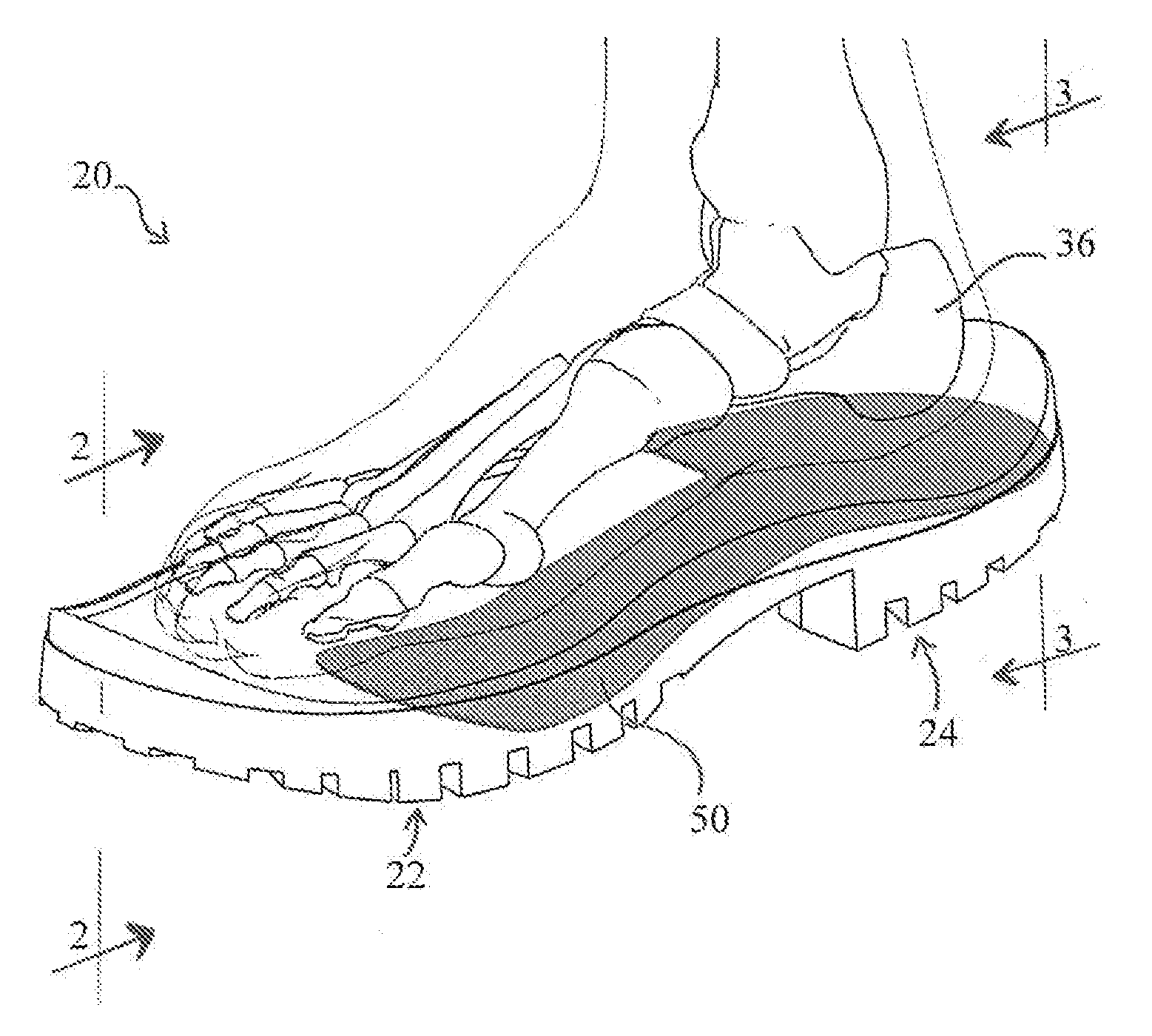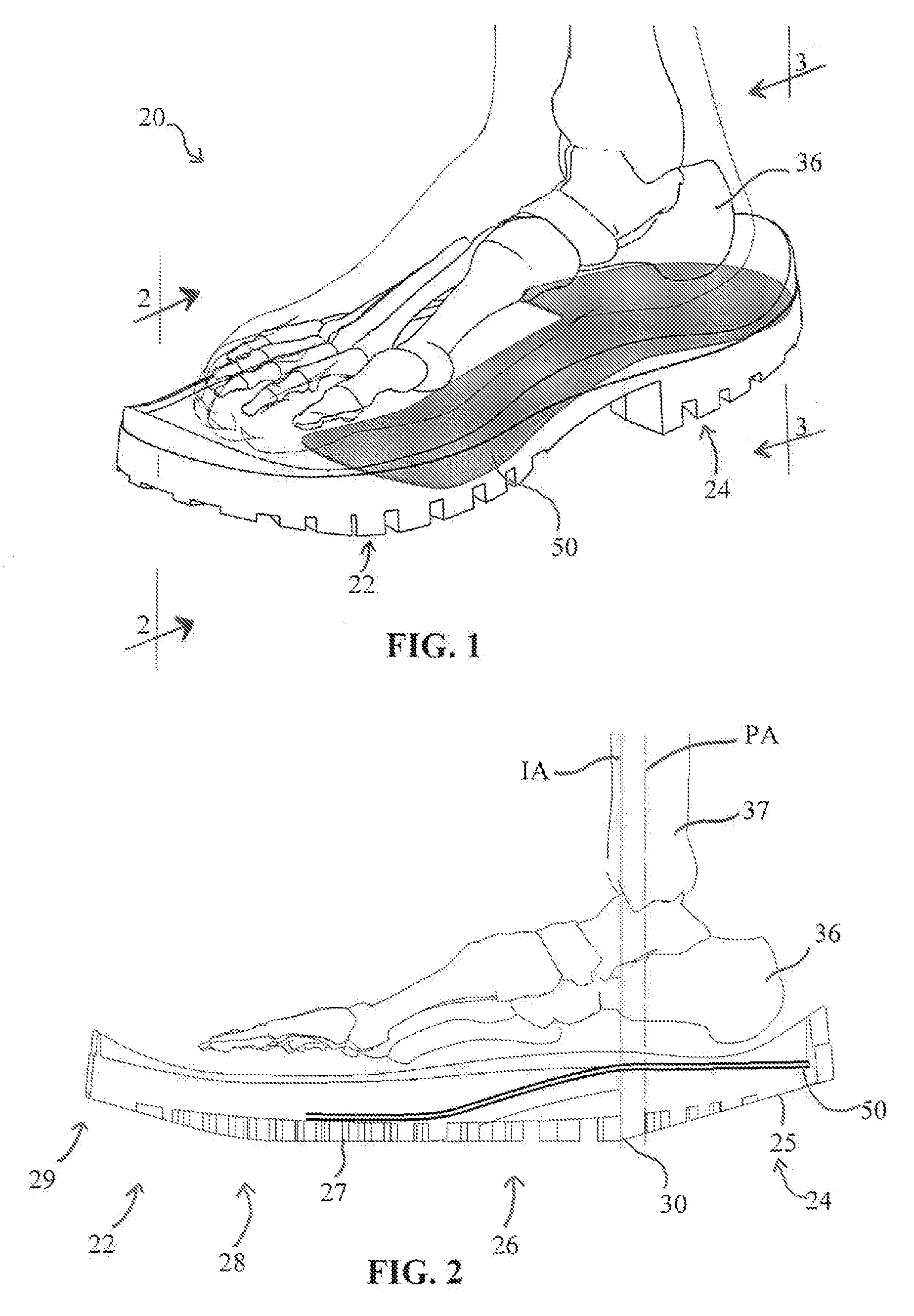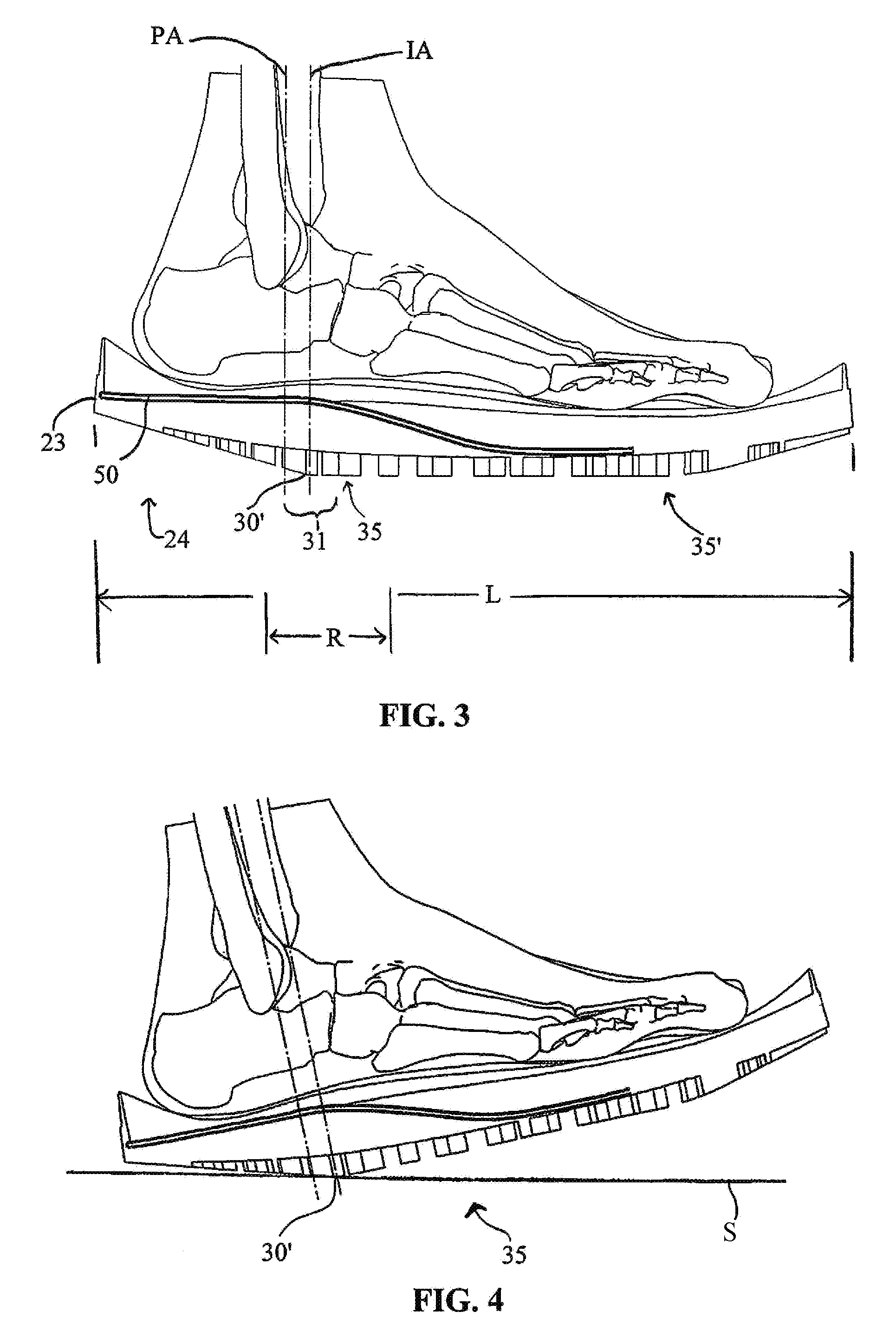Footwear with tapered heel, support plate, and impact point measurement methods therefore
a technology of support plate and foot, applied in the field of footwear, can solve the problems of insufficient product availability, insufficient utilization of inability to fully utilize plantar and ankle mechanisms,
- Summary
- Abstract
- Description
- Claims
- Application Information
AI Technical Summary
Benefits of technology
Problems solved by technology
Method used
Image
Examples
Embodiment Construction
[0029]The subject inventive system may take on numerous physical and method embodiments within the spirit of the invention and only preferred embodiments have been described in detail below, which are not meant to limit the scope and / or spirit of the invention.
[0030]Human foot bones and structures have inspired the present invention. Aspects of the invention include a tapered / angled heel sole of an article of footwear and a combined heel support mechanism as further shown below.
[0031]Applicant appreciates that current footwear fails to address the need for true bio-mechanical movement throughout the foot. The need for a bio-mechanical design to allow proper impact of a foot to a surface is imperative to prevent injuries and fatigue, and to provide comfort for the consumer.
[0032]Applicant has come to appreciate that bio-mechanically the midfoot or forefoot are the appropriate sites for impact with running, hiking, or walking, which allows the arch of the foot and the plantar mechanis...
PUM
 Login to View More
Login to View More Abstract
Description
Claims
Application Information
 Login to View More
Login to View More - R&D
- Intellectual Property
- Life Sciences
- Materials
- Tech Scout
- Unparalleled Data Quality
- Higher Quality Content
- 60% Fewer Hallucinations
Browse by: Latest US Patents, China's latest patents, Technical Efficacy Thesaurus, Application Domain, Technology Topic, Popular Technical Reports.
© 2025 PatSnap. All rights reserved.Legal|Privacy policy|Modern Slavery Act Transparency Statement|Sitemap|About US| Contact US: help@patsnap.com



